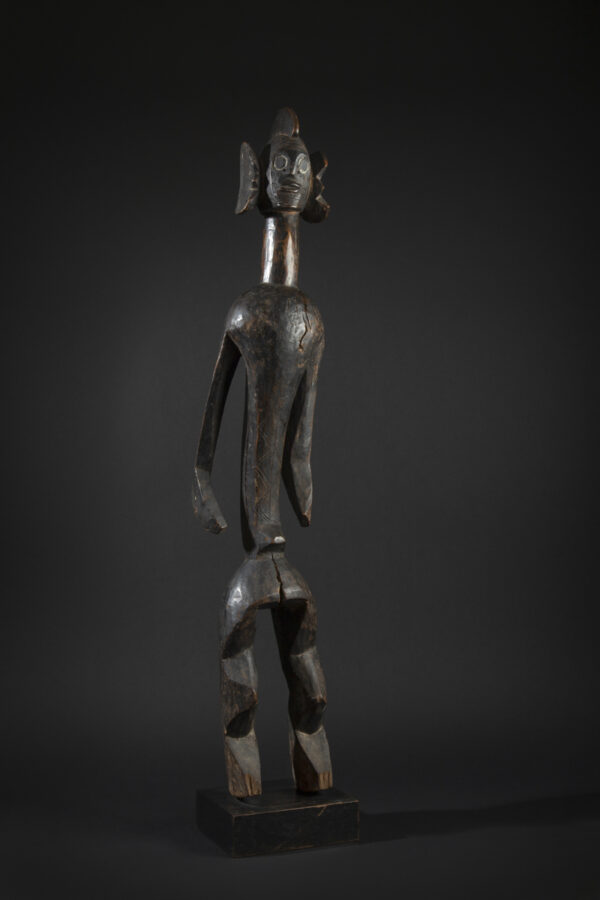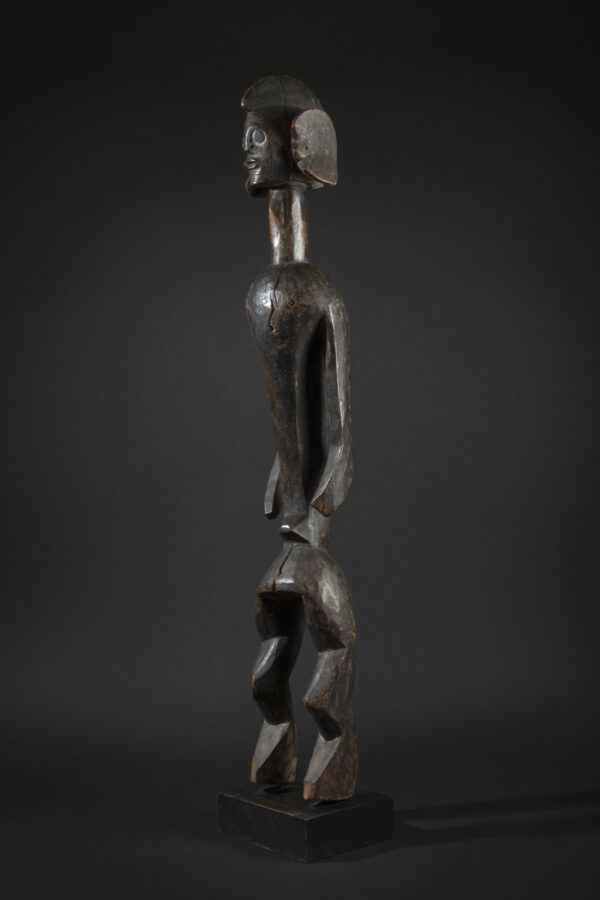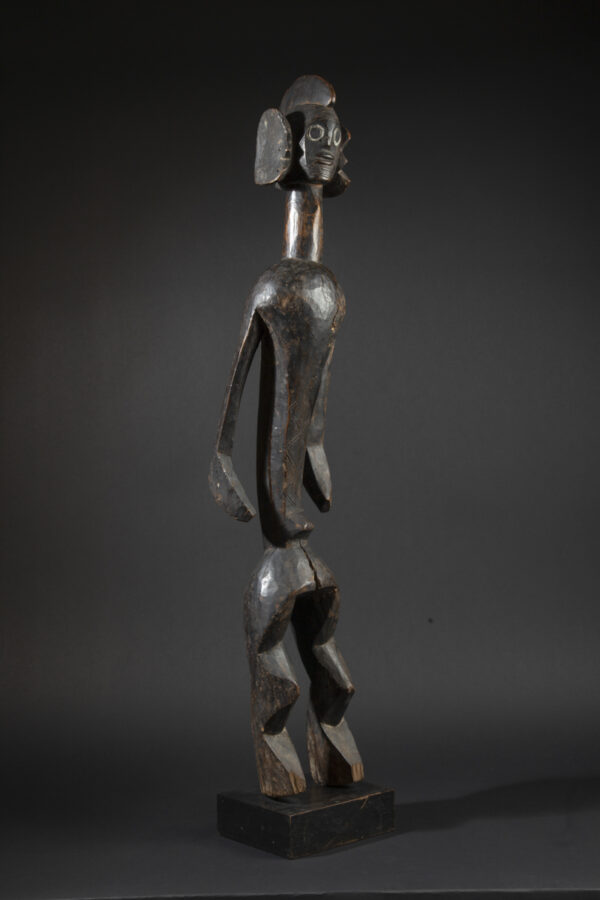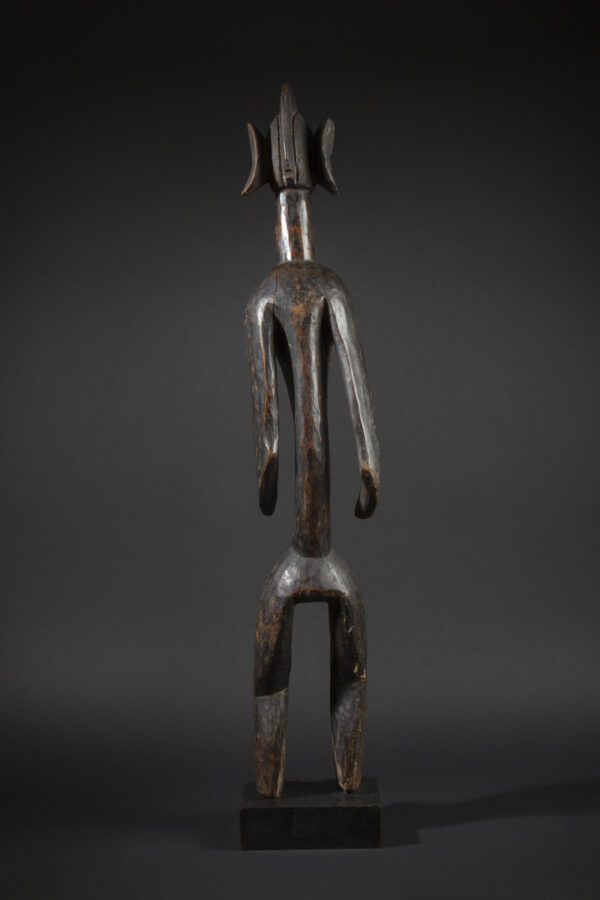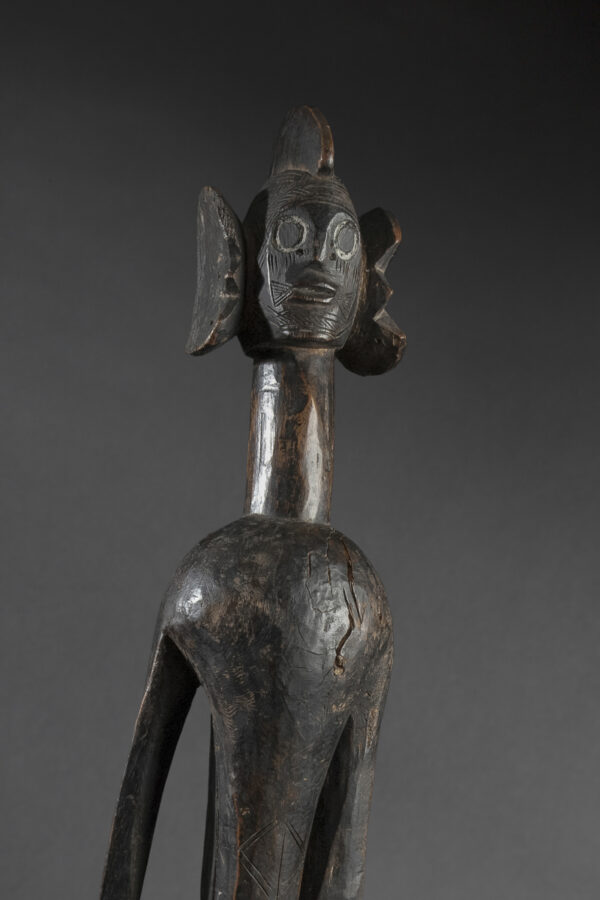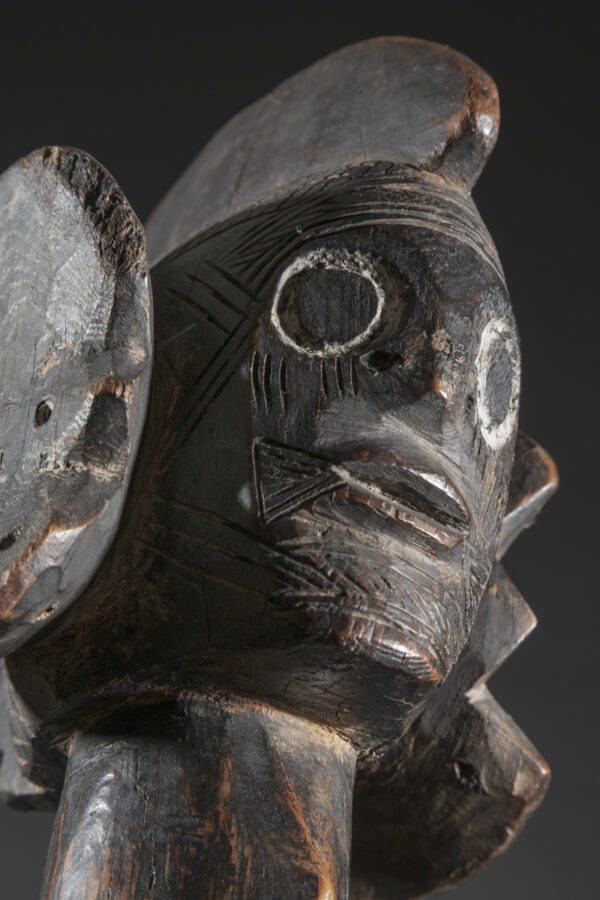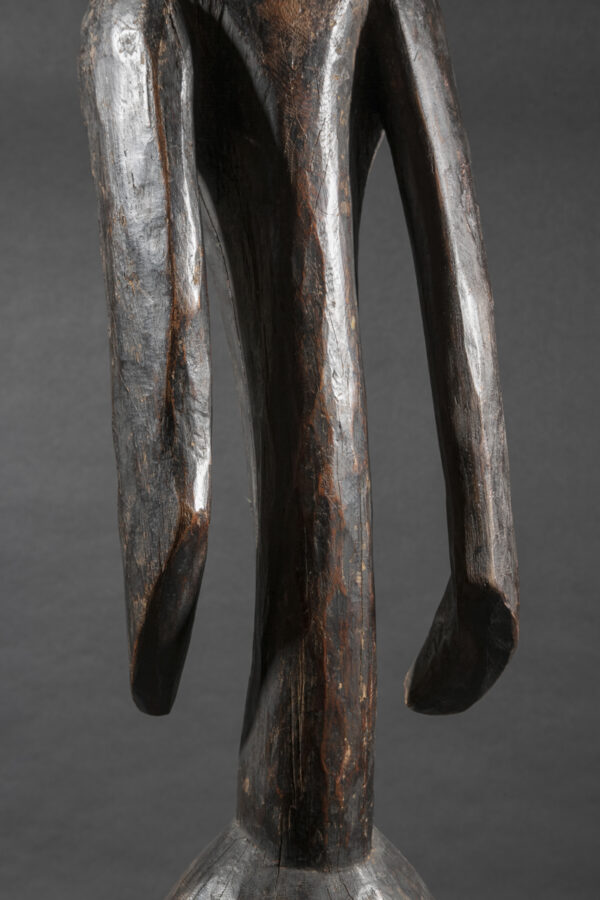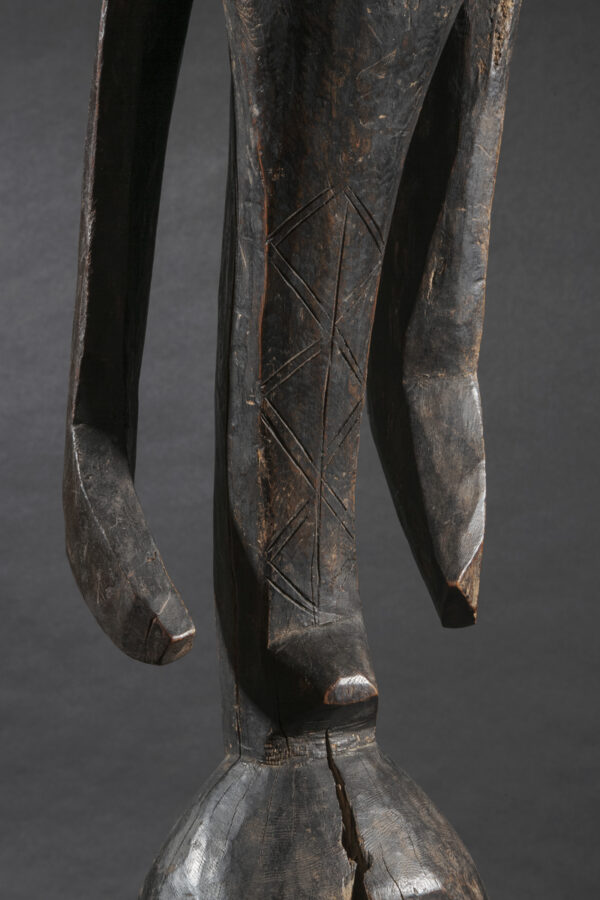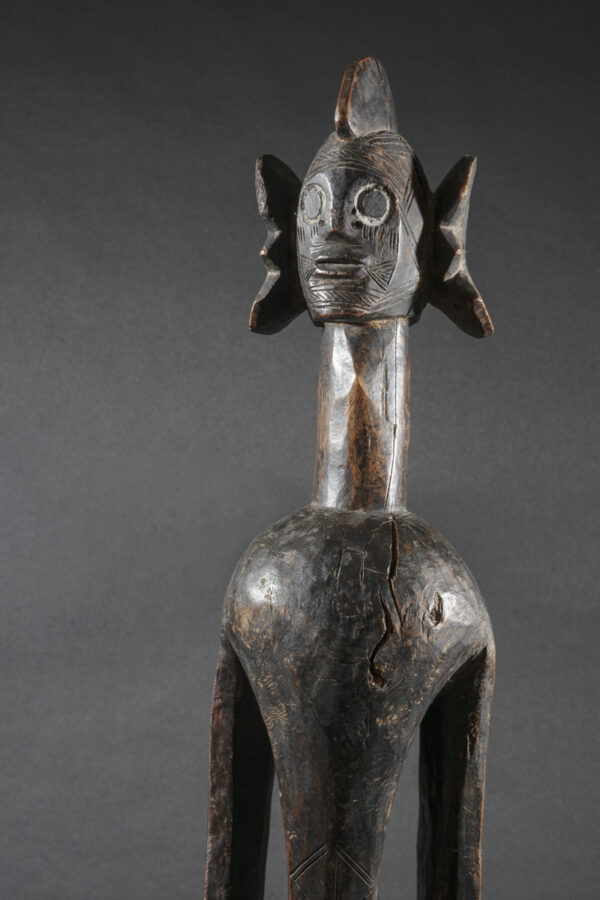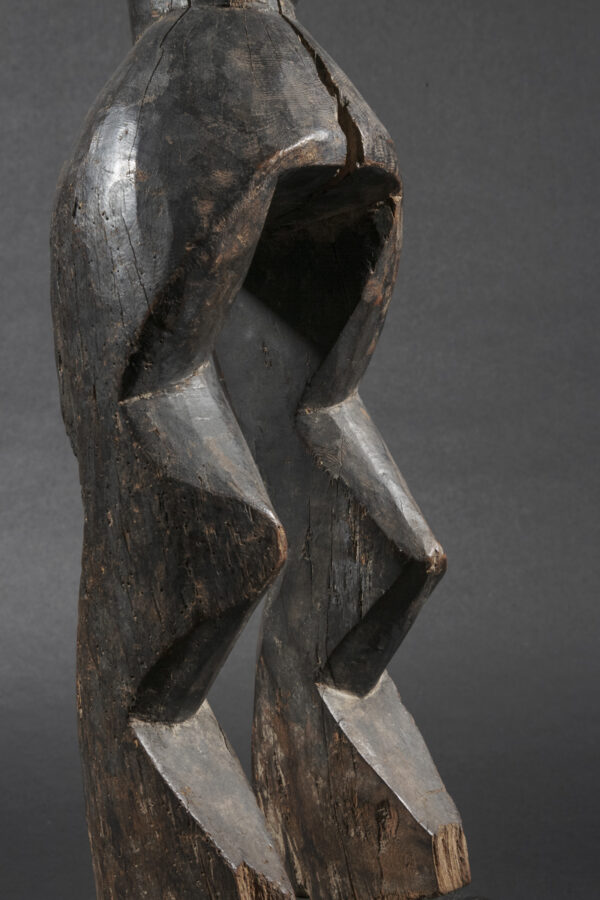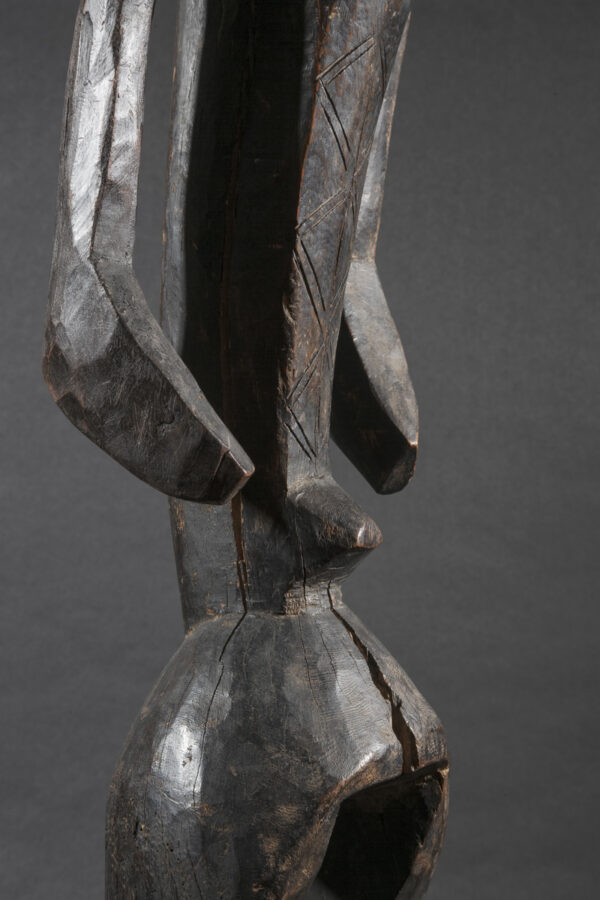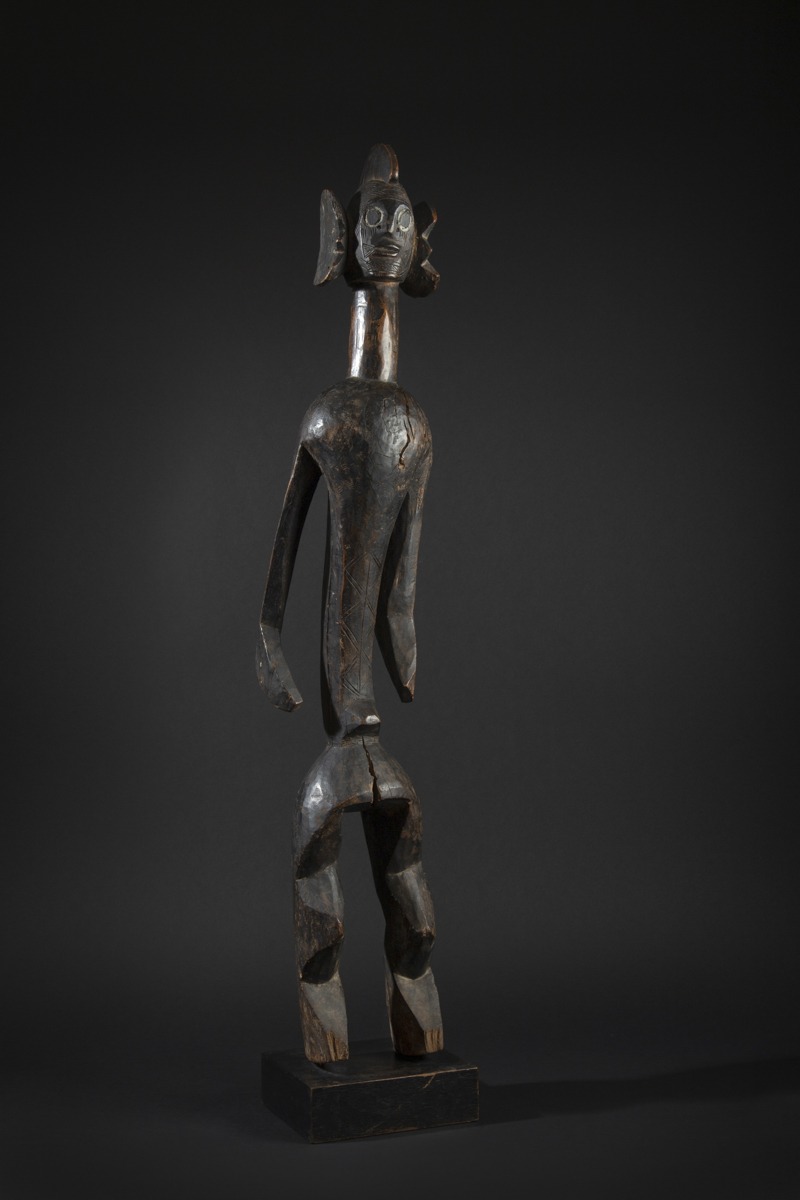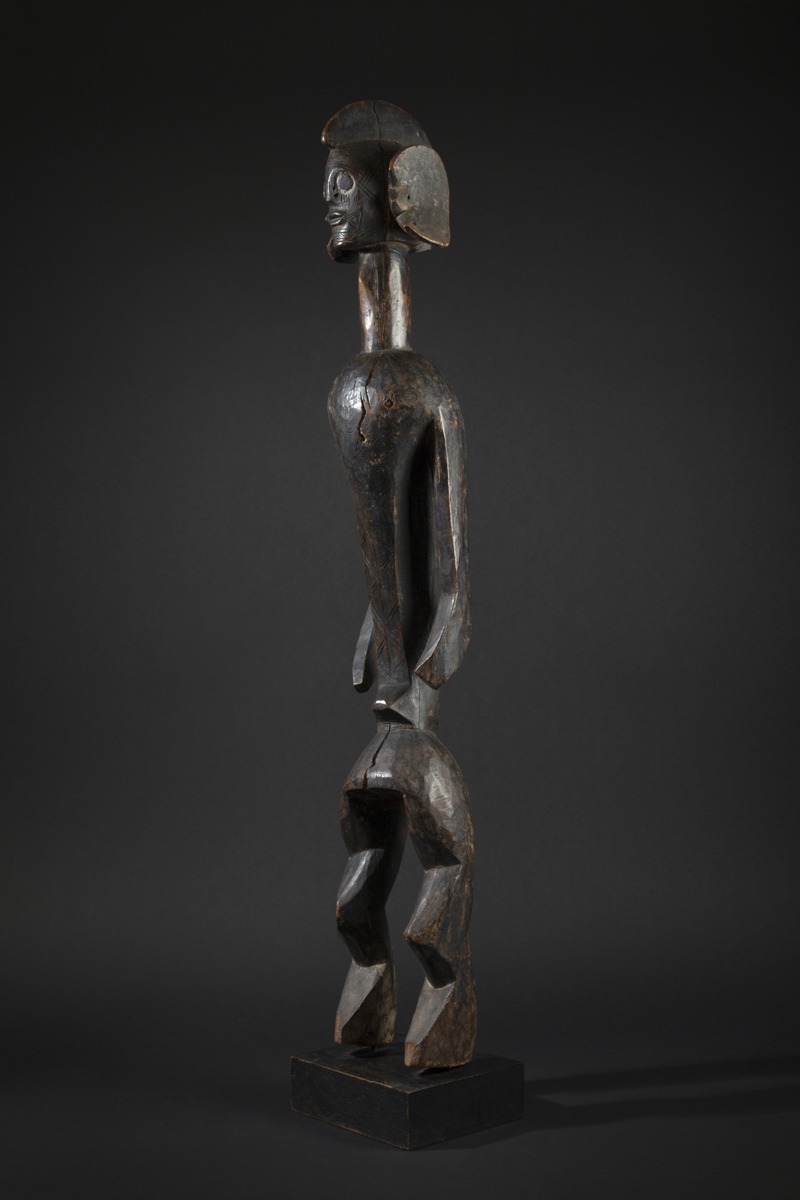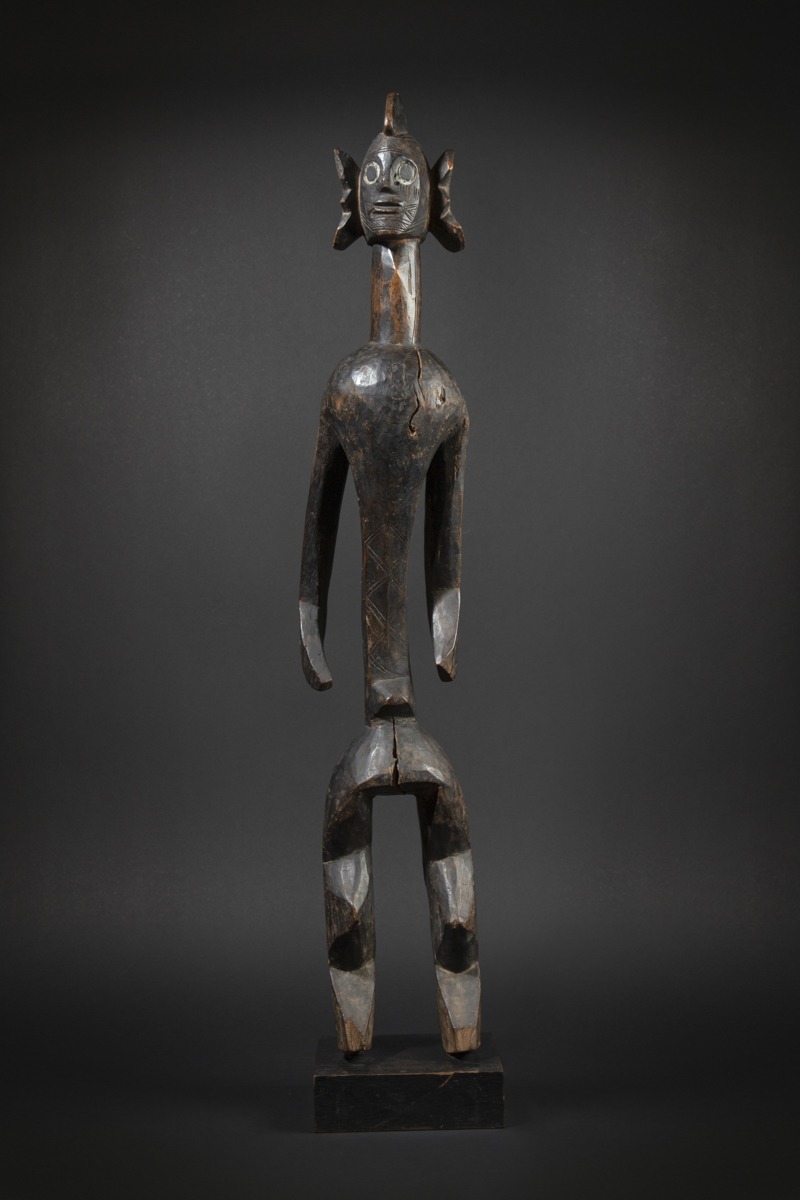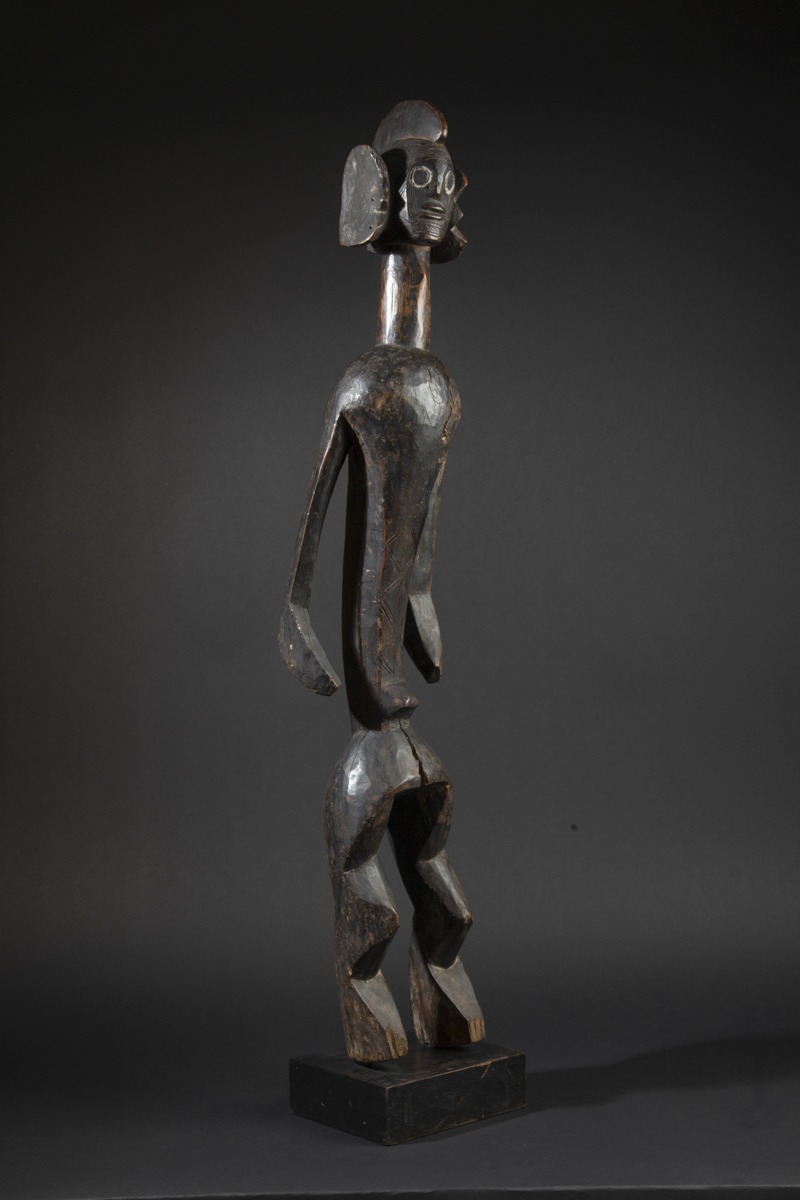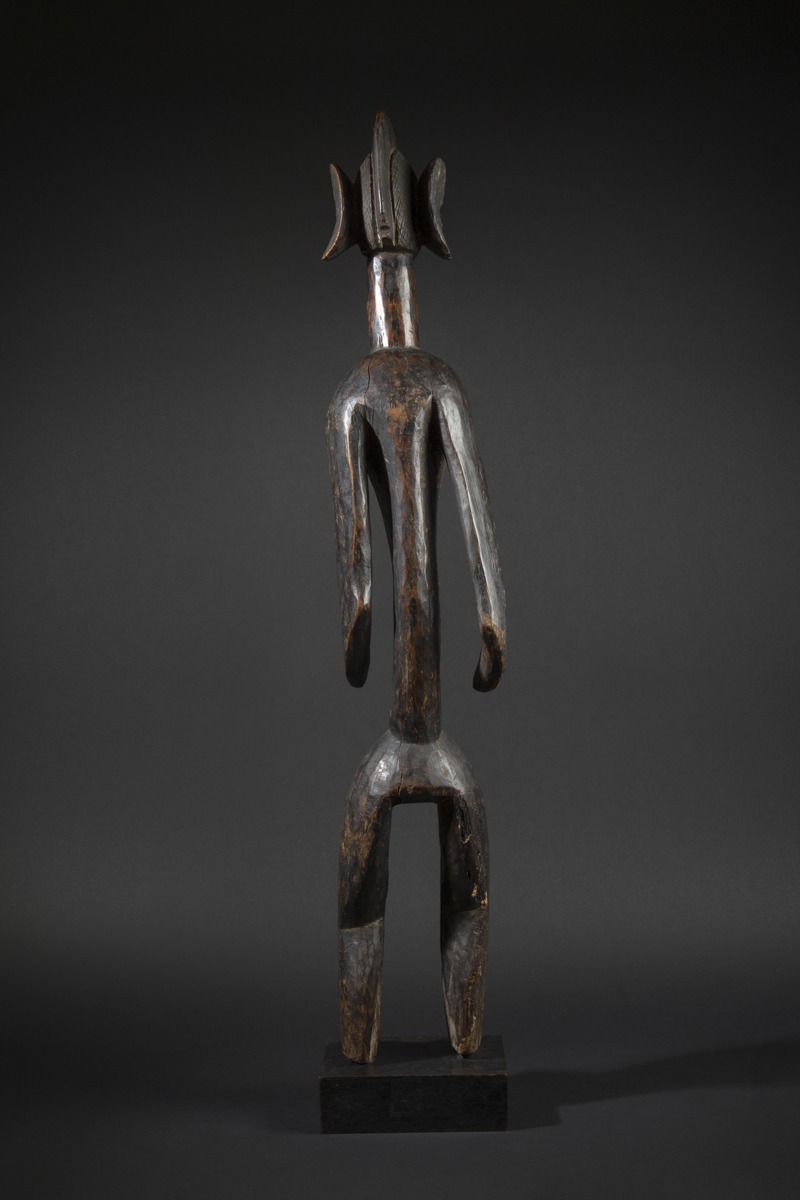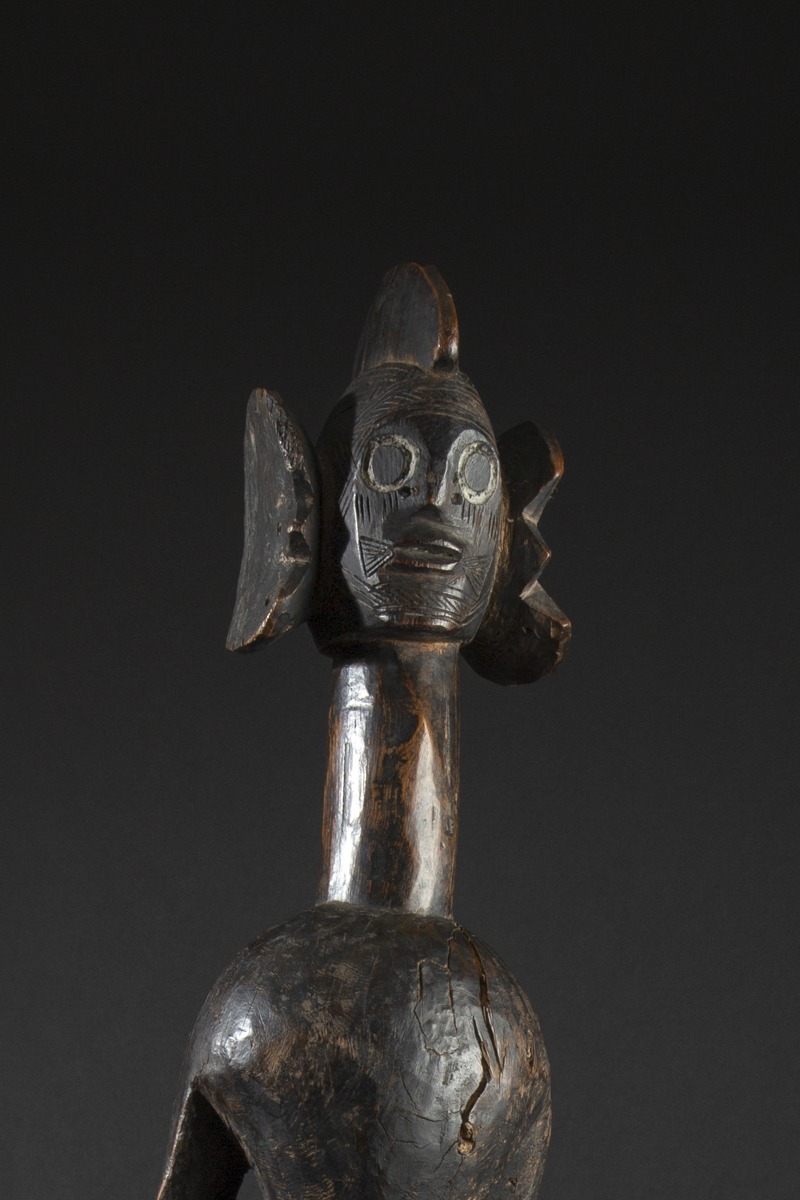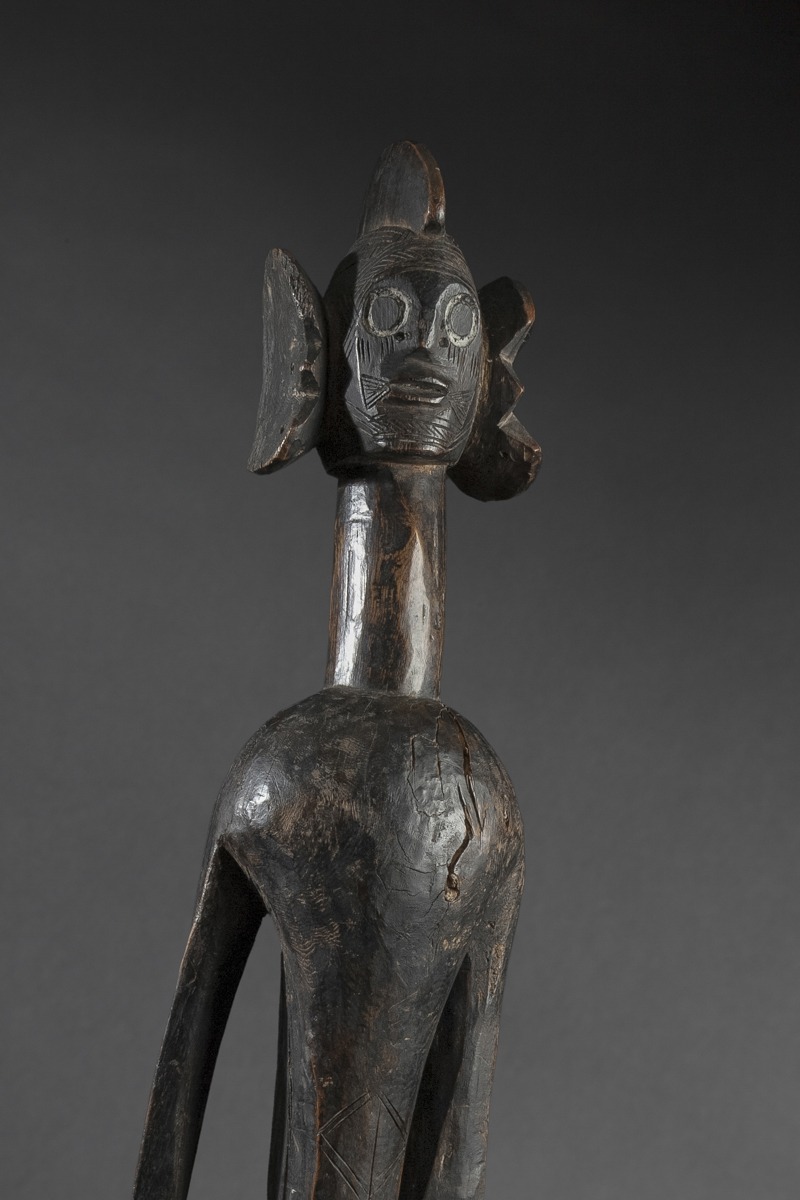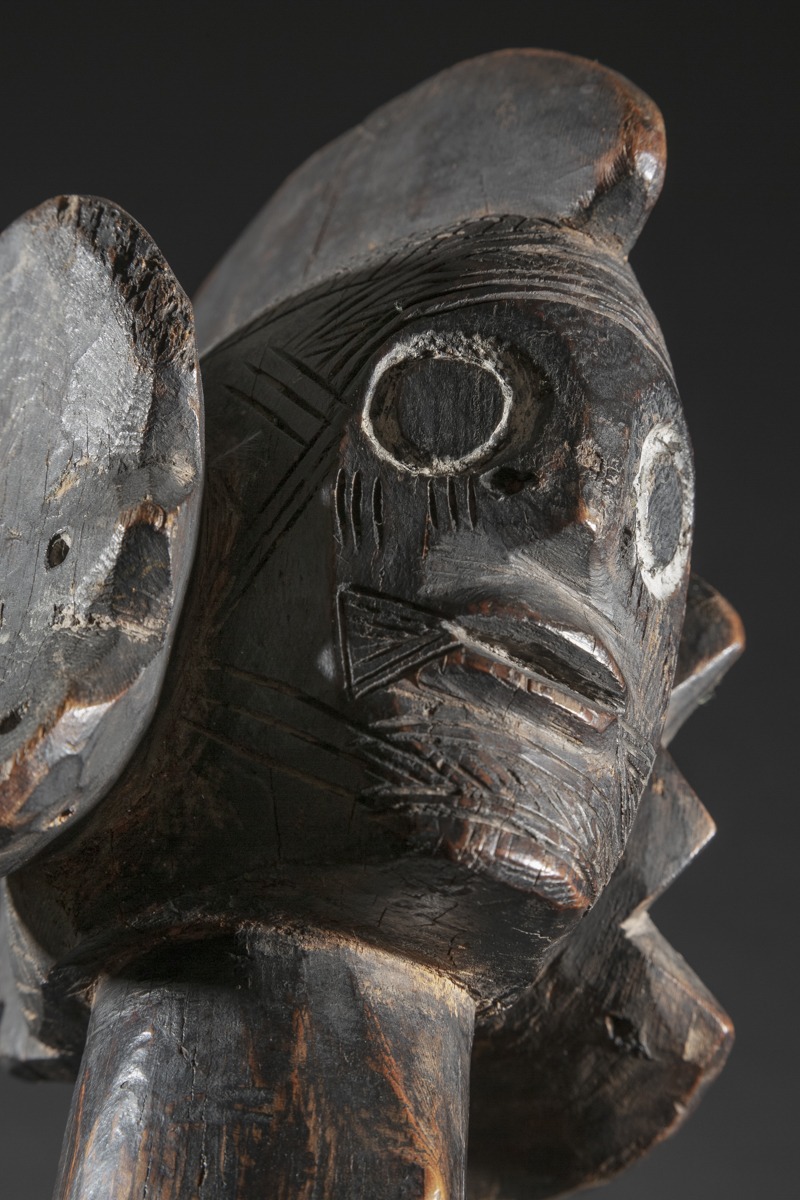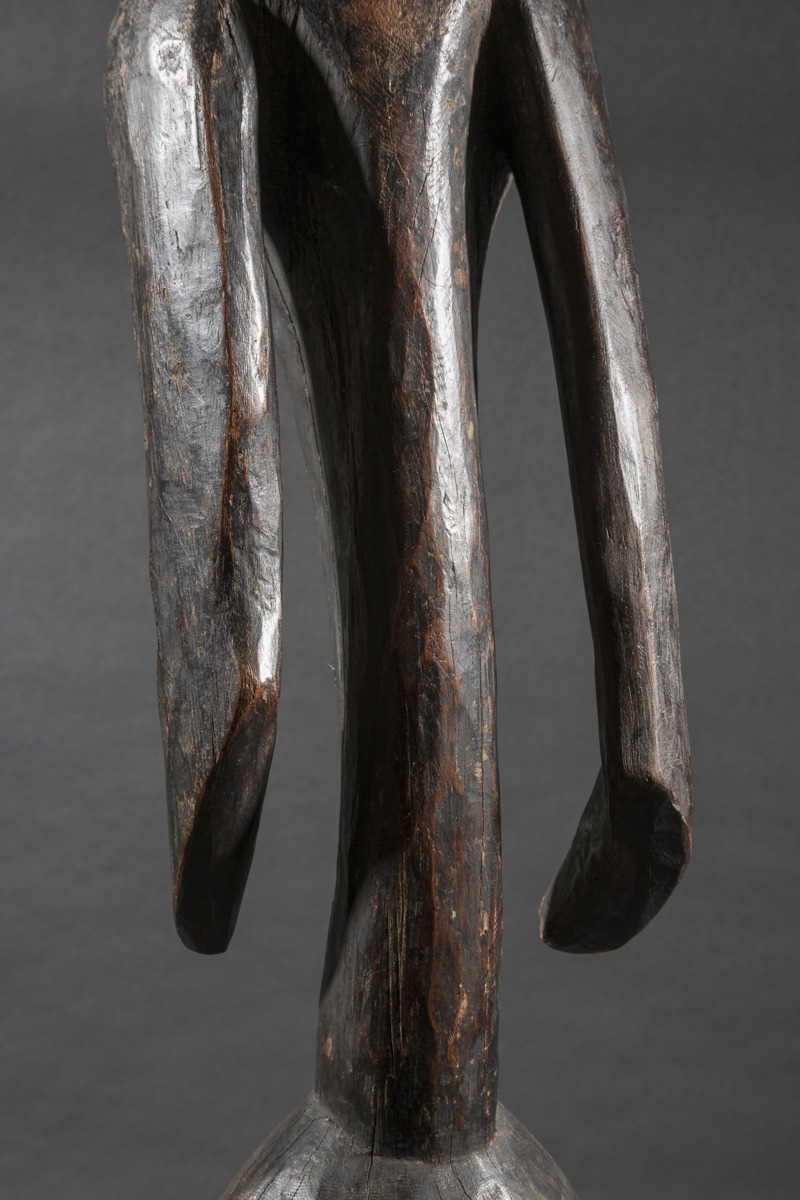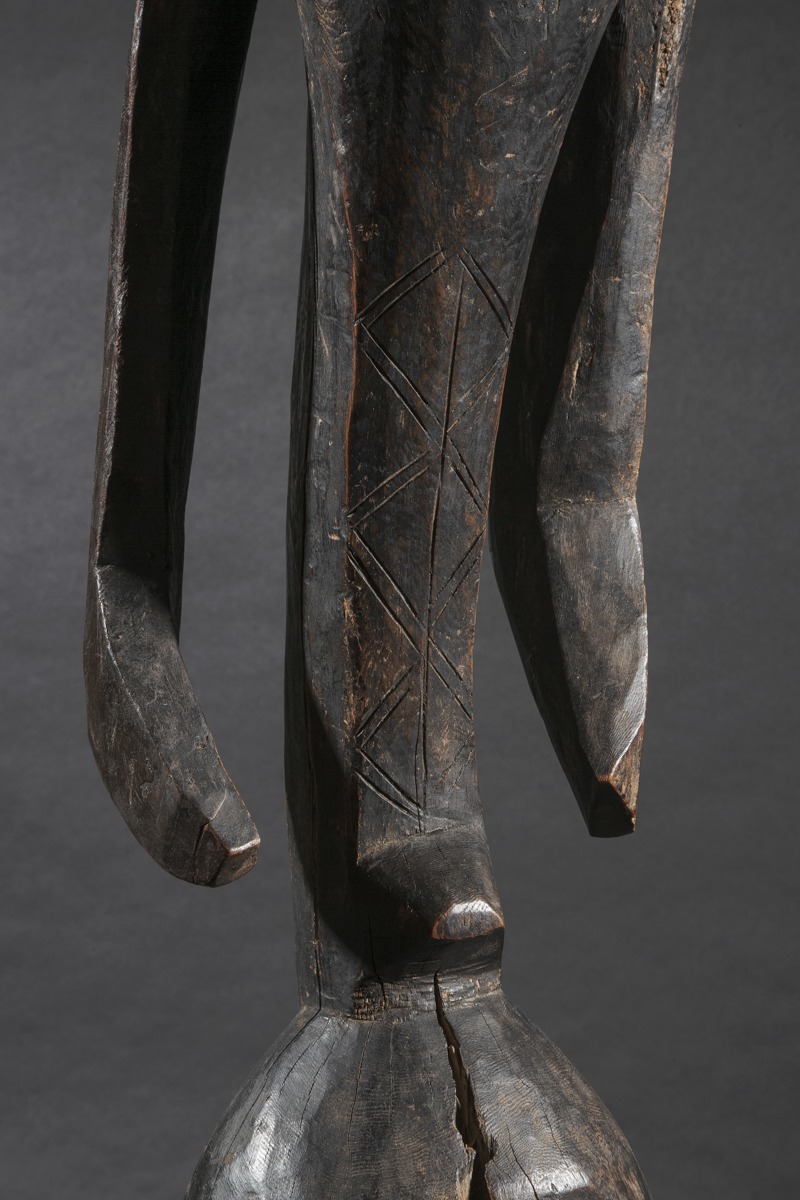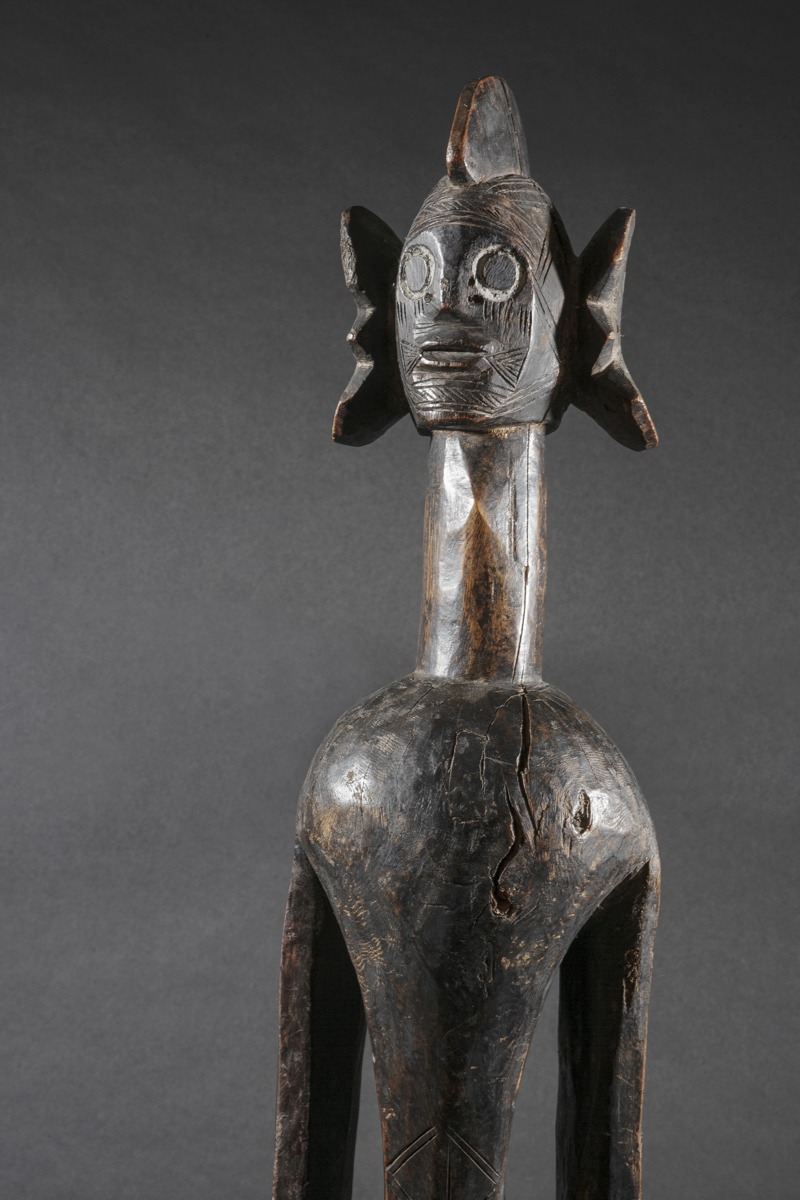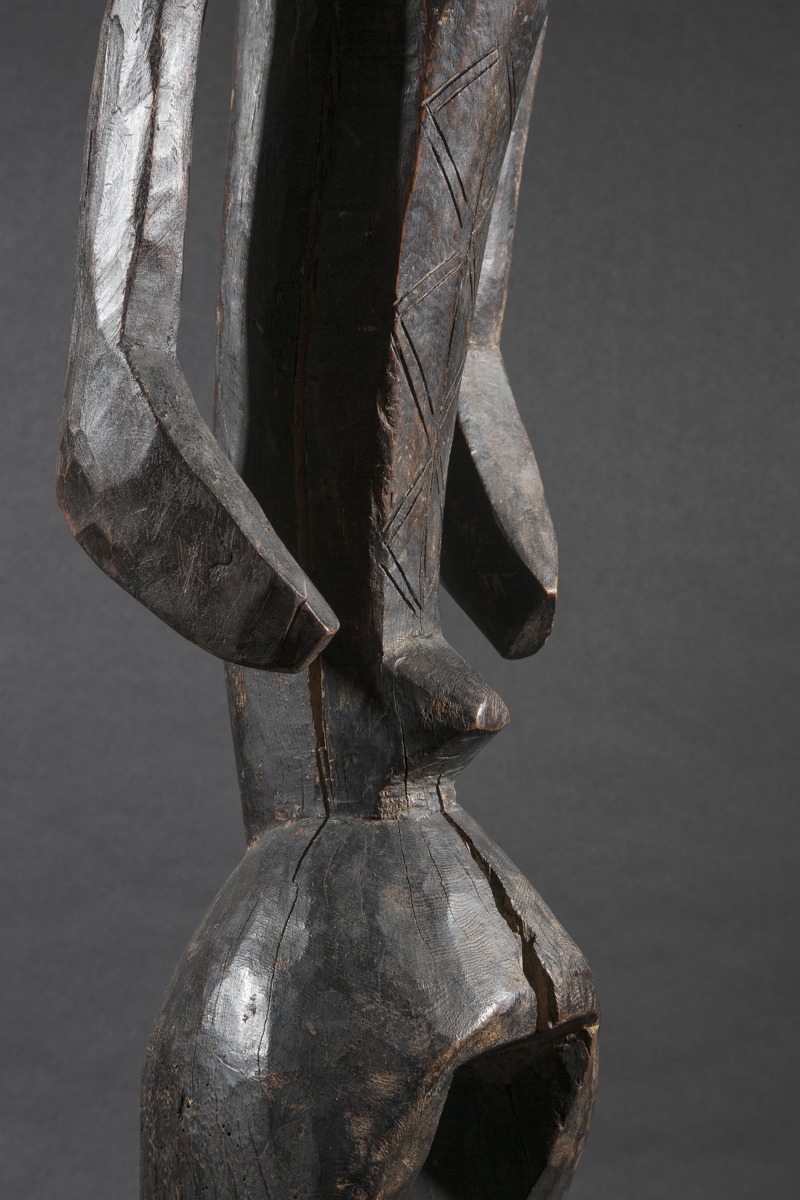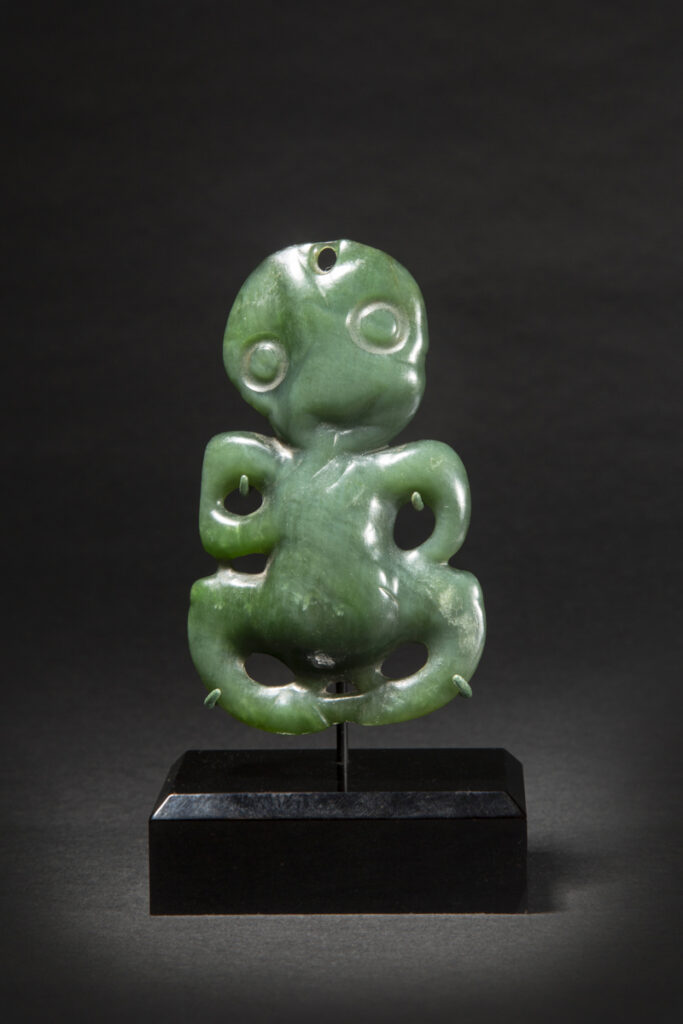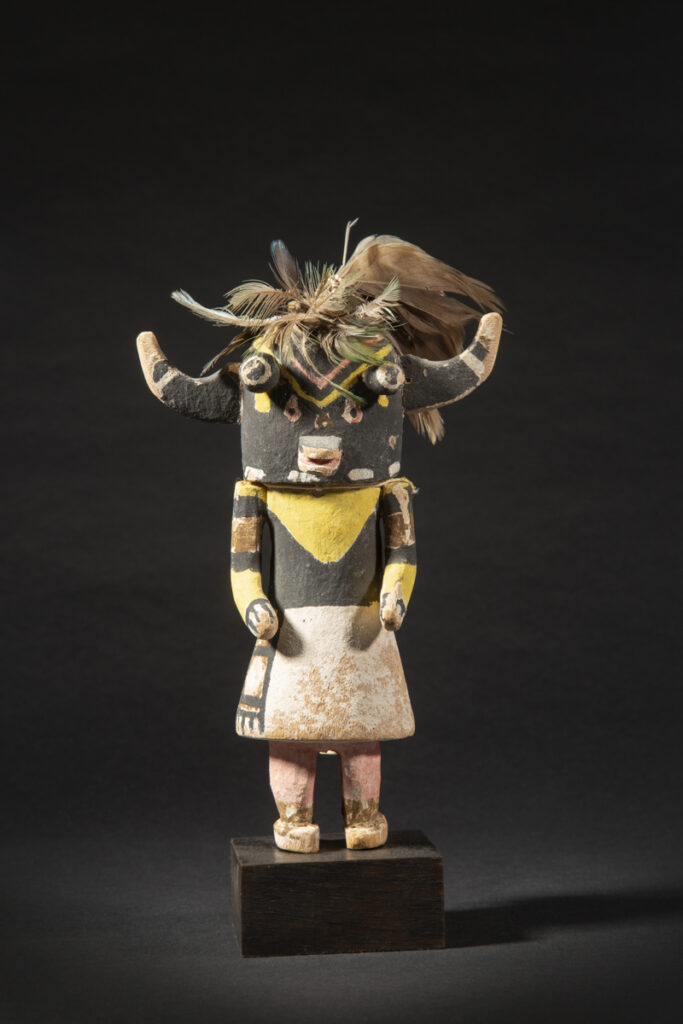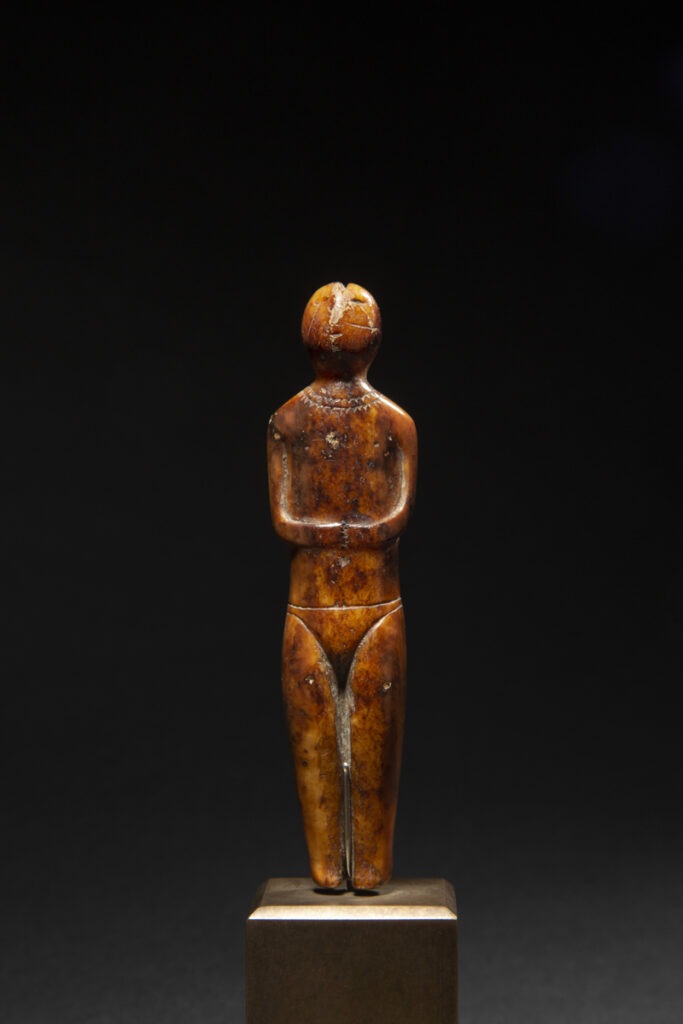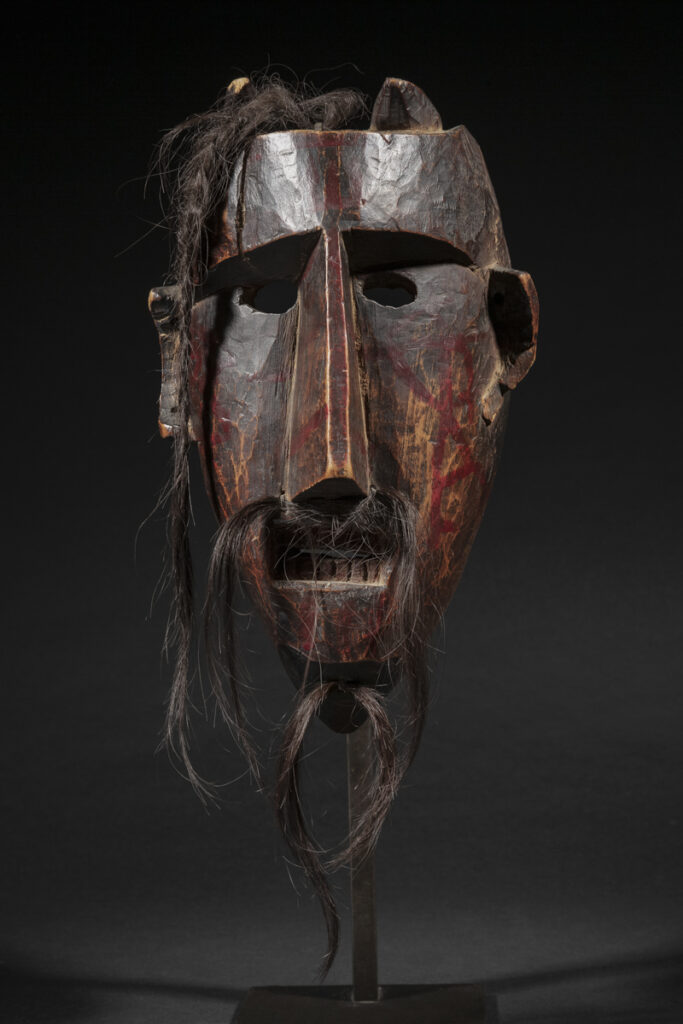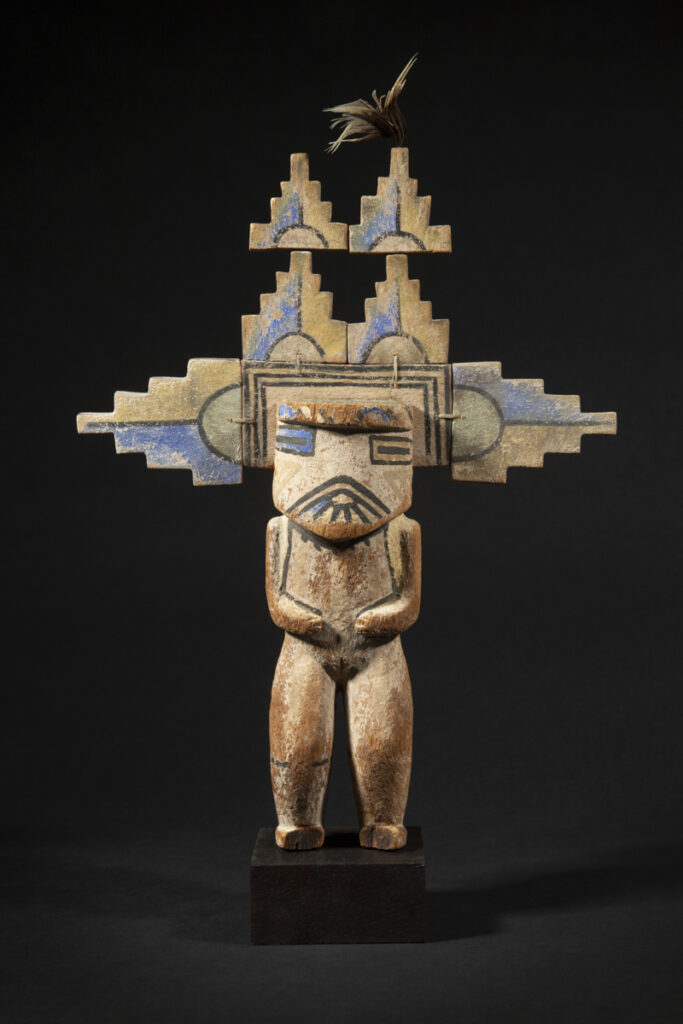Africa | Nigeria
Mumuye Figure
Nigeria
Early 20th century
Carved wood
Height: 39 in. – 99 cm
Provenance
Ader-Picard-Tajan, « Arts Primitifs. Afrique – Océanie. Amérique du nord », Paris, Drouot, 16 June 1988, Lot 82
Loudmer, Paris, « Arts Primitifs », 14 May 1990, Lot 238
Collection Philippe Ratton, Paris
Private collection, France
Private collection, Switzerland
Mumuye figure 99 cm Nyavo Loudmer 1990/ Galerie Flak
Price: on request
The Mumuye live in the foothills of the Shebshi Mountains near the banks of the Benue in eastern Nigeria. This agrarian people is comprised of three different dialectal groups, and was long unknown to Westerners, who discovered their art only in the late 1960s.
Mumuye rituals figures played a central role in ancestor worship and in curing ceremonies. They served as intercessors between the spirit world and that of men, and served as proof of the high status of the family that owned them.
This sculpture is part of a corpus of Mumuye statues known as the Nyavo style (named after a Mumuye artist from Pantisawa): the head resting on a long neck and topped with a central crest, large ears and disc-shaped eyes painted with white pigments and numerous scarifications on the face and torso.
According to Bernard De Grunne in Mumuye, 2023, “Arnold Rubin was fortunate to interview in October 1965 Nyavo who lived in the village of Pantisawa. Nyavo had begun carving in 1961 after studying under his father. The artist showed Rubin five works carved by him in a large variety of styles, ranging from sturdier, more compact style with long drooping earflaps, to taller, slimmer figures with elongated neck and large ears like flaring horns. (...) This style became quickly popular as six different sculptors carved in a similar manner. At least other twenty statues are known to display this characteristic stylistic detail of flaring trumpet-shaped ears whitened with kaolin. The popularity of this specific style may have been boosted by the fact that a statue by Nyavo entered the Musée de l’Homme in 1969 and was published very quickly a year later.”
Mumuye rituals figures played a central role in ancestor worship and in curing ceremonies. They served as intercessors between the spirit world and that of men, and served as proof of the high status of the family that owned them.
This sculpture is part of a corpus of Mumuye statues known as the Nyavo style (named after a Mumuye artist from Pantisawa): the head resting on a long neck and topped with a central crest, large ears and disc-shaped eyes painted with white pigments and numerous scarifications on the face and torso.
According to Bernard De Grunne in Mumuye, 2023, “Arnold Rubin was fortunate to interview in October 1965 Nyavo who lived in the village of Pantisawa. Nyavo had begun carving in 1961 after studying under his father. The artist showed Rubin five works carved by him in a large variety of styles, ranging from sturdier, more compact style with long drooping earflaps, to taller, slimmer figures with elongated neck and large ears like flaring horns. (...) This style became quickly popular as six different sculptors carved in a similar manner. At least other twenty statues are known to display this characteristic stylistic detail of flaring trumpet-shaped ears whitened with kaolin. The popularity of this specific style may have been boosted by the fact that a statue by Nyavo entered the Musée de l’Homme in 1969 and was published very quickly a year later.”
Publication
Explore the entire collection
